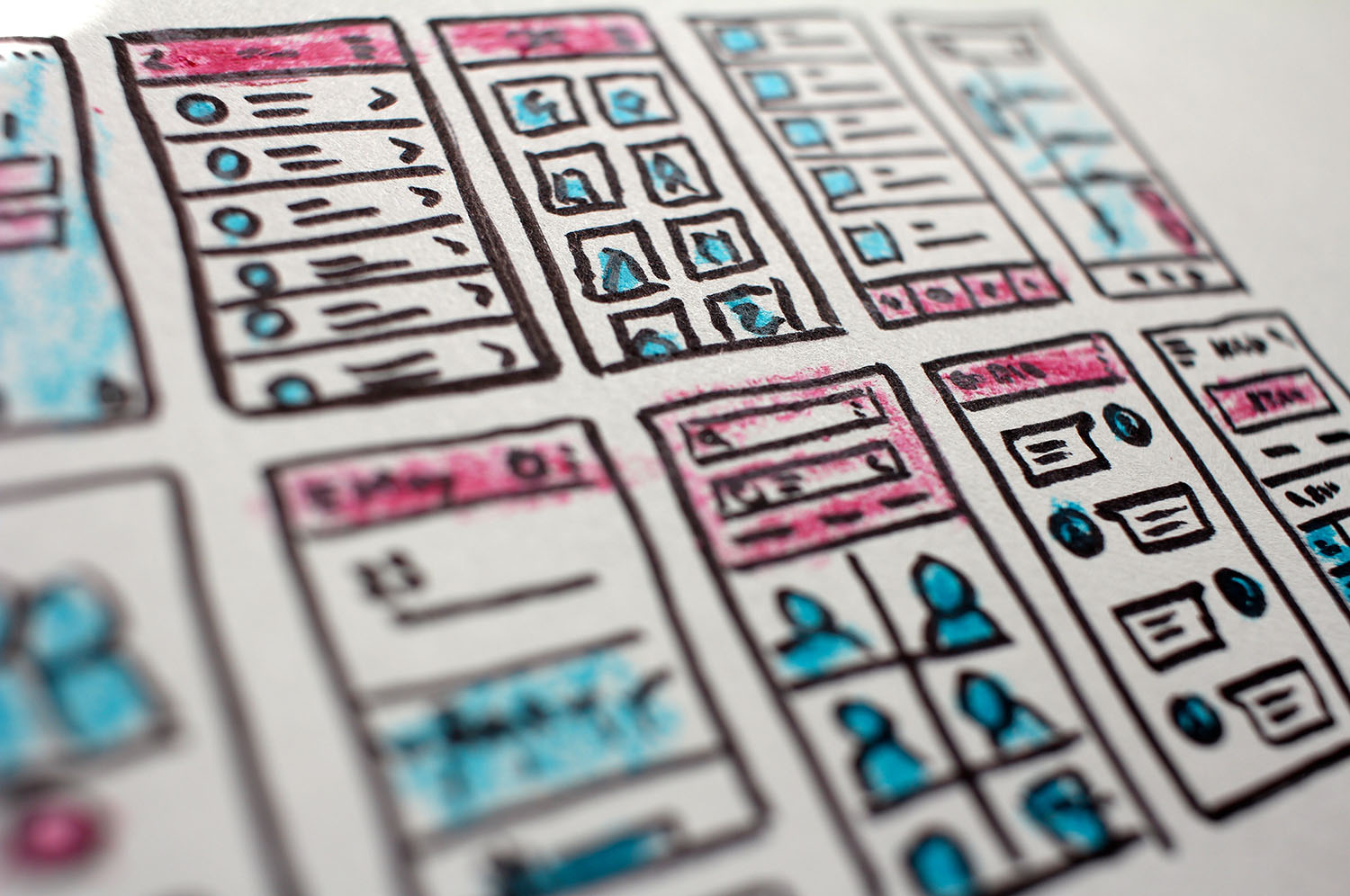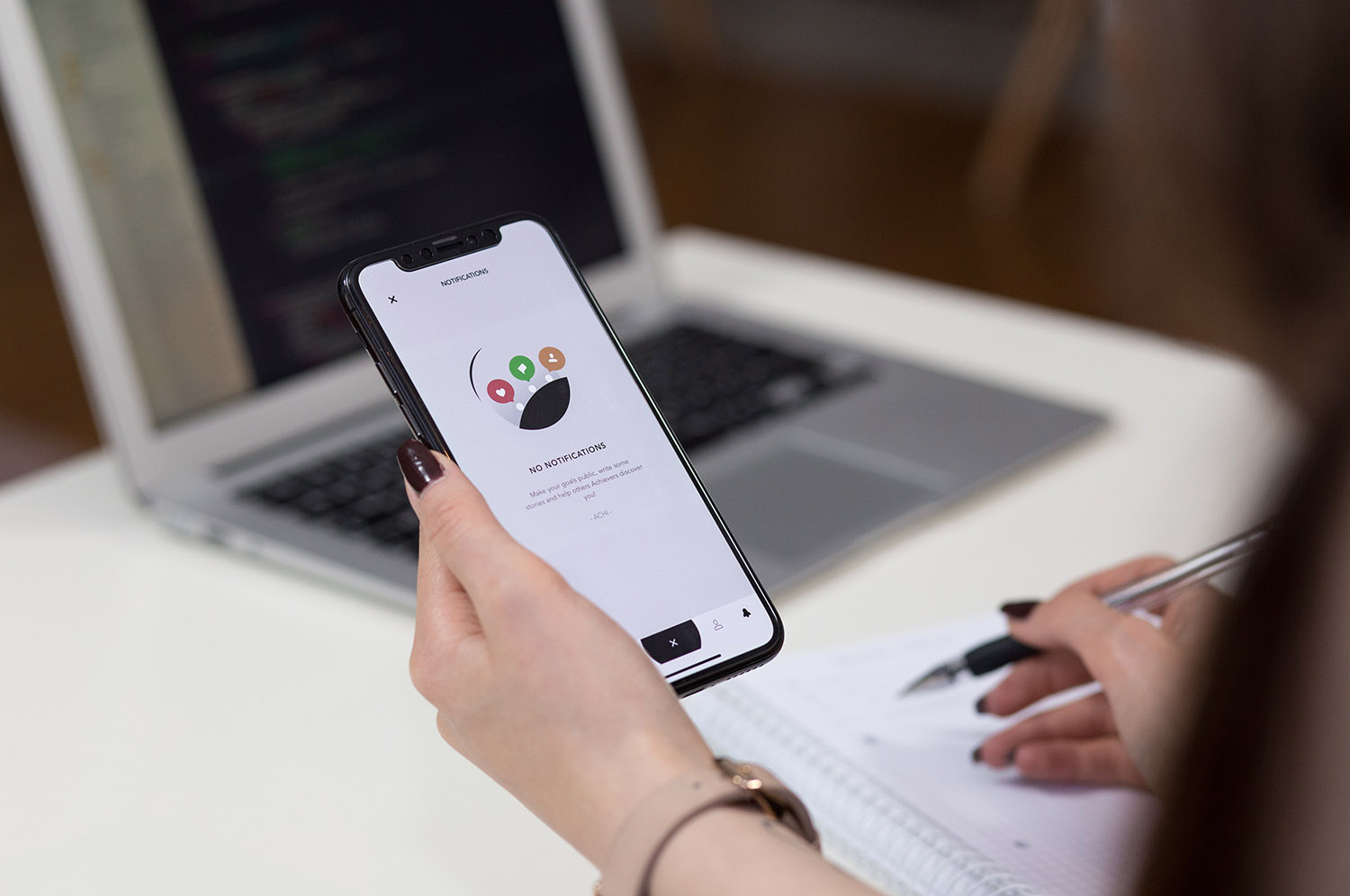Thinking about creating a mobile app for your business? There may be a number of pitfalls on the way, and it’s worth being aware of them. Check out seven very common mobile app mistakes you should steer away from.
A decade ago, mobile phones were used only to call, text, and play very simple games like Bubble shooter or Snake (does anyone even remember playing Snake on their phone?). Now, it feels like there’s a smartphone app for anything you might ever need, and every single company has one of their own. It’s not like I’m complaining - people are surrounded by various apps on their smartphones, from Japanese language courses, through shopping list makers, to time management, and, of course, games. According to Buildfire statistics, there are 80+ apps installed on the average smartphone.
One of these apps… could be yours. And that’s hopefully just whetted your appetite.

Considering that there are 3.2 billion smartphone users worldwide and over $935 billion in revenue is expected to be generated by mobile apps by 2023, it’s no surprise that all companies - including yours - want to have their share of this industry. The thing is, there are already almost 3 million apps available for download in the Google play store and nearly 2 million in the Apple App Store. New ones are appearing every day, so the fight for smartphone users’ attention is becoming increasingly heated in a sector where the competition is already fierce.
If you want to have the chance to attract mobile users’ attention, you need a well-designed, user-friendly app that will solve their current problem or pain point, make life easier, or simply deliver entertainment.
Take a look at TooGoodToGo - an app that helps stores and restaurants sell any surplus food rather than throw it away. App users can pick a restaurant from the partners' list and order a bag with unsold food for a much lower price. It’s a triple win - restaurants and stores earn money on food they would otherwise waste, they get new customers, and the app users get delicious food for a much lower price, and this way, both parties work towards reducing food waste. According to TooGoodToGo official page, they have 29 million users, and they saved over 59 million meals from being thrown away!
However, creating a mobile app can be really tricky.
Many companies often realize too late they made some mistakes when designing their app, which led to a commercial or technical failure that is hard to take back after an unsuccessful launch.
So let’s get straight to the point. What are some common mistakes that are made when creating a mobile app, can you avoid them, and if so, how? We decided to identify seven common mistakes for mobile apps in-the-making.
1. Lack of extensive research before pressing “start” on mobile app development
Mobile apps can help build brand recognition and give the company an additional revenue source, but usually only when it’s used regularly. And for people to regularly use the app, it must fulfill their needs or solve a given problem.
Let’s go back for a moment to the TooGoodToGo app. The idea behind creating it was to connect restaurants that have unsold food to consumers who would be willing to buy some meals for a lower price - consumers can enjoy a tasty meal for a discounted price while restaurants don’t have to throw away perfectly edible dishes. Now, TooGoodToGo is available in 13 countries and has 40,000 partners - from grocery stores and independent restaurants to bakeries and coffee shops. As of March, the app had 50,000 users daily and saved 100,000 meals per day.
How can you design a similarly successful app?
Creating a mobile app for your business is both a time and money-consuming process. If no one is using your app because of a lack of demand, this might lead to a financial problem. So before deciding on creating an app for your company, you need to do extensive research on your audience. Among other aspects, you should think about the main objective of your app:
• what problem or need of your audience the app could solve,
• what competition you need to face,
• and what your unique selling proposition (USP) will be.
You also need to think about the way in which you will promote your app after its release - building a mobile app is one thing, but making it known to your audience and getting them to download it is a totally different ballgame. And since there’s huge competition in app stores, with hundreds of new ones appearing every day, you can’t afford to be unprepared.
2. Is your budget defined (and down to earth?)
Mobile app development requires knowledge, skills, resources, time, and… budget, obviously. You need to hire a mobile developer, DevOps specialist, mobile designer, backend developer, and project manager, at the very least. Plus, developing the app will take a minimum of a few weeks to a couple of months, depending on how complex it is. According to Cleveroad, the cost of creating a basic app is around $25,000, while complex ones can cost well over $70,000. Of course, you can find online people or companies that promise to make a spectacular app for a much lower price, but unless you want to build a very simple one then it’s not recommended to skimp on the budget.

This is especially important now that mobile technology is changing rapidly. Plenty of mobile apps already use the most recent advances like artificial intelligence (AI), virtual reality (VR), and augmented reality (AR). So to stay competitive you need to hire people who not only are familiar with the latest trends, but can use them in practice as well. The mobile app business is ever-changing, and users can quickly drop an app that doesn’t fulfill their expectations, so saving on the budget now may actually cost you more in the future.
To gauge how much you might need to spend on your app, it’s a good idea to identify your needs and requirements and maybe even try to estimate an initial budget. Then, simply ask a few companies (e.g., through a Request For Proposal) or independent developers for a quote and, on this basis, match it with the budget you’re ready to dedicate to that particular project.
Keep in mind that you also have to add some extra costs for unexpected errors, testing, or project complications, as well as for the promotion of your app and its maintenance afterwards. Spending your very last dime on mobile app development and being left empty-pocketed is not a good tactic either. The costs of ASO (App Store Optimization) may also be significantly high in the most saturated industries.
3. Lack of effective communication
Whether you are building the mobile app in-house or using a software development company’s services, you need to make sure all parties are on the same page regarding the design. Otherwise, it might be that the finished app doesn’t look or work exactly like you wanted. If it requires only minor changes, that’s one thing, but what if the features you wanted are not implemented? Adding them will take time and often money.
To avoid these sorts of misunderstandings, you need to explain your vision, ideas, and expectations to the developers in detail:
• how the app should look • what features it should have • what should happen when users click a specific button or perform a given action • what the touchpoints in the app should be

Using images such as flowcharts or sketches to show your vision to the developers will make it easier for them to understand your expectations. Also, with a detailed list of expectations, developers can specify how much time they need to create the app and approximately how much it will cost.
It’s better to spend more time discussing details in the midst of the project or the development stage than once the app has been launched, since it may be too late for fixes and implementing new features by then. If the communication simply doesn’t click or causes further problems or delays, and solving issues is impossible or only temporary, you may want to consider switching to another mobile app development crew.
4. Overloading with unnecessary features
Now when the smartphone users are getting both demanding and spoilt (they can uninstall an app in a few seconds if it isn’t what they are looking for, and install a similar one without any hassle), many companies may assume that the best way to woo their audience is to offer numerous features in their apps. If the users are given an “all in one” app, they won’t need to look for another one or turn to competitors, right?
Let us agree to disagree.
While, at first, releasing an app with dozens of features might seem sensible, it may turn out that reinventing the wheel wasn’t needed: the app’s users may only use a couple of the features. And overwhelming your potential users with hundreds of features they don’t need and won’t use is not providing a stellar customer experience.
Instead of that, you should find the golden mean, which should correlate with your research. Double-check what features your competitors offer in their mobile apps, what their users report to be wanted but are non-existent or unavailable, and what bottlenecks they have identified.
And better that.

5. Designing an app for a single platform
In the earlier years, companies often decided to create an app only for one of the main platforms (Android or iOS), as otherwise, they would need to create two separate versions at great cost. Not to mention, updating or bug fixing two separate apps would be a nightmare.
But today, developers can use various cross-platform mobile app tools to simultaneously build an app for both iOS and Android platforms. The benefits of this approach are obvious - lower costs of developing the app (as there’s one team behind both versions), a far bigger audience to reach (the app can be published on both app stores), and also adding new features to the app can be done faster. But when designing an app for both platforms, keep in mind the differences between the two systems. For example, Android has physical navigation buttons while Apple devices don’t, so you need to optimize the navigation for both.
Oh, you don’t actually need to keep that in mind - it’s enough if your chosen software development company does.
6. Prioritizing great app design over CX and usability
Even if there’s a great idea behind your app, it may not be worth much if your app is slow, difficult to use, lagging all the time, or anything else causes it to be nonfunctional. To keep attracting new users and engage current ones, you need to focus on UX first. The app should be intuitive so that users will be able to quickly get on board and find their way among all of the features.
Get the balance right.
Your mobile app should not be like Times Square - full of messages, ads, and chaos (unless that’s the actual idea of it). Make it the Central Park - equally popular, but offers some space for further development, easy navigation, and peace of mind.
A simple and straightforward design doesn’t have to be bad or a work-in-progress. Simplicity is often the key, and that’s how you can amaze your audience. Often, less is more. The simpler it is, the better the functionality too. It will also help the app load quickly and move fluidly, so users won’t have to wait while moving through screens.
7. MVP version not detected
Here’s this excellent app of yours. It took you long months to develop, and you have to admit it may still not be 100% finished. But you really, really, really can’t wait longer to give it the green light.
Final push. Released. Promoted. A whopping 14 people downloaded it. And all of them hated it as it lagged on the start screen.
Oh yes, that’s true, you hadn’t spent much time developing it, let alone testing before it went live. You’ve rushed it. And it’s likely to cost you time and money on never-ending fixing, but also the trust of the first potential clients (who just uninstalled your app, by the way - why would they keep it on their device if it doesn’t work?).
While you can’t avoid all possible bugs in your app, you can avoid rushing and not testing before it goes public. With only three letters: MVP.
![]()
Minimum Viable Product in terms of mobile app development is a version that has only the basic features and is used to test how it will perform when actively used by smartphone users, as well as to gather their feedback. Let’s say that users of your MVP version noticed that they have problems when using a specific feature or troubles navigating the app. After gathering their feedback, you can rework the navigation menu or add a tutorial on how to use this feature before the official launch.
MVP helps you spot bugs and errors inside the app that could quickly turn your mobile launch and further maintenance into a disaster. That way, rather than release a mobile app riddled with bugs or one that doesn’t have the features your audience expects, you can update it based on MVP user feedback and release the product when it’s polished.
So, should I even develop my mobile app?
Mobile apps can bring tremendous benefits to the companies developing them, and we have no intention of putting you off this idea by listing just a couple of mistakes that you may encounter. Yet app development requires proper preparation, awareness of possible mistakes along the way, and doing all-you-can to avoid them. They may bring additional costs, delays, misunderstandings, and overall frustration.
Whether you are building an app on your own or planning to outsource the project to another company, you will surely run into some problems. But now that you know about the most common issues, you can prepare yourself for those and save your time, money, and nerves in the long run.
We simply hope you won’t make any of those mistakes when creating a mobile app yourself, with your team, or a partner software development company (oh, if you’re still looking for one, here we are!).
See you in the app popularity charts!
You may be also interested in:
➤ How to build an MVP. A Guide to Minimum Viable Product
➤ How much does it cost to build a mobile app for your business?
➤ 6 common risks in software development projects – and how to avoid them











 Angry Nerds (Poland)
Angry Nerds (Poland) Angry Nerds (USA)
Angry Nerds (USA) Angry Nerds (Canada)
Angry Nerds (Canada)



